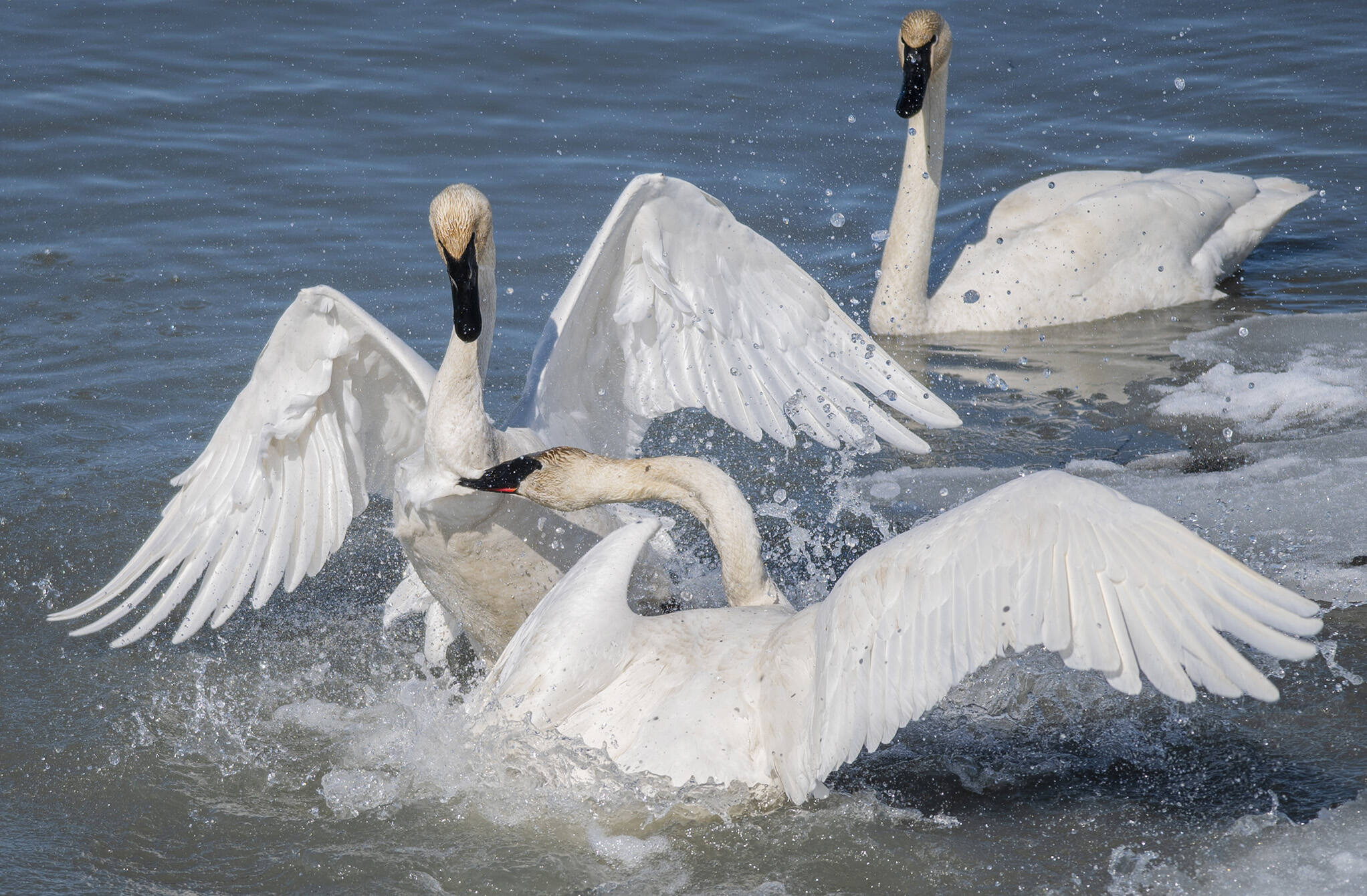After consulting local residents, oral histories and the scientific record, a plan to protect the Tagish River has been put in place.
A management plan for the river was signed by the Carcross/Tagish First Nation (CTFN), the Yukon government and the Government of Canada.
The Tagish River Habitat Protection Area Recommended Management Plan was shown to the public on Nov. 9. It was the product of significant public engagement and will guide the rules surrounding the approximately five-kilometre waterway that joins Marsh Lake and Tagish Lake.
Along with recommendations for new regulations, the 76-page report is intertwined with a story of a Tagish First Nation girl and her family on a seasonal migration from their trapline near Little Atlin Lake to Carcross and back, passing the Tagish River area and making use of its important resources as they went. The report states that this narrative was written by Elder Dora Wedge and adapted from the book My Old People Say, written by Catherine McClellan in 1979.
Following the account of the family’s journey to and from Carcross, the report also charts the seasons on the Tagish River. Spring; with a return of energy and life after a long dark winter as well as a return of waterfowl on their southward migration. Summer; as berry bushes come into fruit and the iceless water brings tourists to the area. Fall; as the leaves and bushes turn yellow and the shorter, colder days arrive, and finally Winter; as snow and ice blanket the area in silence.
Information is also provided on the significance of the Tagish River to CTFN whose traditional territory it runs through, and also to all the groups who rely upon the Yukon River system — the Tagish River is an important part of its headwaters.
The key goals pondered in the report are how best to preserve and celebrate the important river. Plans to this end include the establishment of a habitat protection area encompassing the entire length of the Tagish River, conserving a full diversity of fish and wildlife populations and operating the protected area in a way that recognizes and honours the area’s significance to CTFN’s history and culture. The importance of First Nations ceremony and of incorporating traditional place names into signage were also mentioned.

The report states that planning took place from 2015 to 2020.
The result is a series of management recommendations that will be implemented by a committee with representatives from all three groups that signed the agreement. Some of the 35 total recommendations deal with how the management plan could revitalize CTFN culture and institute new best practices for fishing, boating and other recreational use. Concrete steps include the elimination of lead-based fishing materials in the area, new rules to limit the impact of boats and off-road vehicles as well as minimization of development, including docks, on the shoreline of the river.
Also recommended is the establishment of further stewardship, research and monitoring. The goals stated include an inventory of species of interest that use the protected area, and an assessment of a possible salmon recovery project for the area. More study of the river’s use as a wildlife movement corridor is also recommended.
Released alongside the final management report was a summary of the input received from the public. The vast majority of the 81 people who participated in meetings about the plan met in person in Tagish but meetings in Whitehorse, Carcross and online were also held. The engagement primarily happened in the fall of 2020.
The report says that during public engagement, community members in Tagish voiced concerns about people and dogs harassing migratory birds during the important migration stop at the river. There were also concerns about the use of boats and off-road vehicles in the area as the swans arrive in the spring.
Also suggested during engagement was making users of the protected river area self-register in some way, possibly through a mobile app. It was also suggested that the easily-accessible lake trout fishery created by the Tagish River bridge negatively impacts trout populations in the rest of the lake system. Elimination of the bridge fishery entirely or making anglers register their harvests were both suggested.
CTFN Haa Shaa du Hen Maria Benoit called the plan an important milestone in implementing CTFN’s final agreement. She thanked the Yukon and federal governments as well as the Carcross/Tagish Renewable Resources Council and the Tagish Local Advisory Council for their work on the plan.
“This management plan has innovative recommendations that should be considered in sharing and protecting a culturally important place for Tlingit and Tagish people,” Benoit said.
Similar accolades were heaped on the plan by government officials in a statement. Yukon Minister of Environment Nils Clarke echoed Benoit’s statements about the importance of the protected area for reconciliation. Steven Guilbeault, the federal Environment minister called the plan important for Canada’s commitment to protect 25 per cent of the country’s lands and waters by 2025. Yukon Minister of Energy Mines and Resources John Streicker called the waterway vital and said the management plan will ensure it is protected. Yukon MP Brendan Hanley offered thanks to those who worked on the plan, calling input from the community essential to the process.
Contact Jim Elliot at jim.elliot@yukon-news.com
